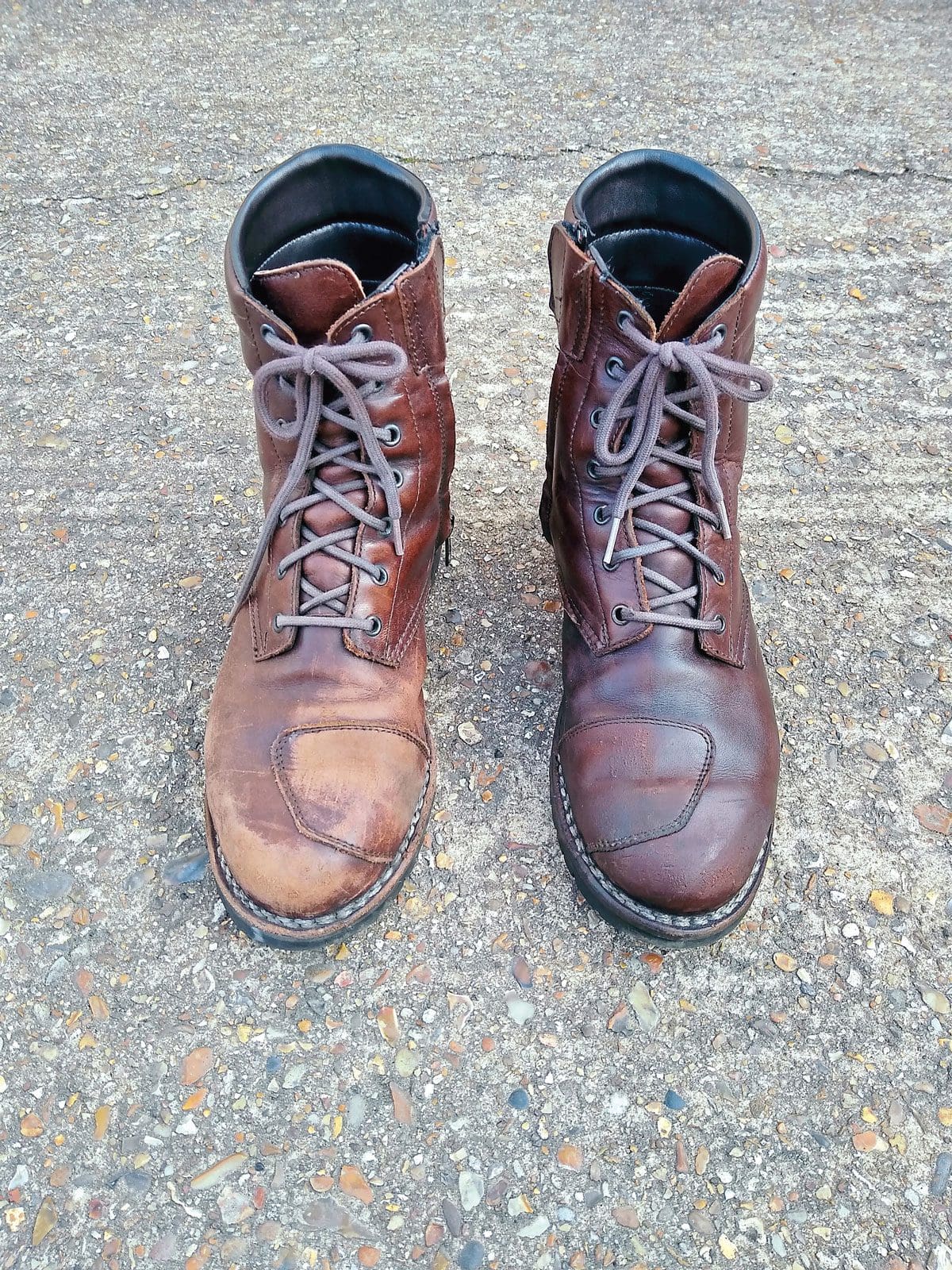Leather needs care. Here’s how to keep your kit in top condition, the easy way…
If there is a material synonymous with biking, it has to be leather. From the iconic images of Marlon Brando in ‘The Wild Ones’ to today’s highly-protective kit, leather remains the material of choice for many.

And for good reason. It’s flexible, softens with wear, and if the worst happens, you know leather’s abrasion resistance is superb.But leather needs looking after. Here’s what to do…
■ Give the kit a regular clean with a soft cloth. If things are grubby, a slightly damp one is good to lift the dirt.
- Empty the pockets. It’s tempting to leave your bike keys, etc., in a pocket, but leather will stretch to accommodate the item held in it.
- Leather benefits from being allowed to breathe. Unless it has space to allow any dampness to dry, your kit could quickly be affected by mould.
- Blot away water or moisture that can leave stains. These may well be treatable, but it’s better to keep your kit naturally dry and clean.
- Let it dry naturally, away from artificial heat, which can easily over-dry it, losing its natural suppleness, which could lead to cracking.
- Spots and stains can be cleaned with a mixture of soap flakes and warm (NOT hot) water. Blot away water with a soft cloth after and allow to dry naturally.
- Test any product on a small, concealed patch beforehand. That way, should it have a detrimental effect (some balsams can darken the colour, for example), you will pick up on it before affecting the rest of the kit.
- Feed your leather. Using a specialised leather conditioner (such as Renapur Leather Balsam) every three to six months will keep it supple and looking it’s best.
Of course, for every list of good things to do, there are things you should NEVER do to your leather kit. These mainly boil down to getting it too wet or too dry! Leather should not be allowed to get wet if possible (I know, we live in the UK, it’s going to happen), and most definitely, not immersed in water (unless you want it to lose its shape).
Do NOT apply any kind of artificial heat. Don’t tumble dry it, and most definitely don’t iron it! These are all recipes for disaster. Do any of these and you risk discolouring at best or at worst cracking and ruining your leather. That kind of damage will be a costly mistake as you’ll need to get the item repaired or at worst scrapped and replaced.
Rescue mission
My TCX Hero leather boots are five years old, and they have been through thousands of miles in all sorts of weather, with no maintenance. They’re holding up okay, but they weren’t looking their best and weren’t supple, so not as comfortable as once they had been.

To rescue them, I went for Renapur Leather Balsam (www.renapur.com). At just £12 for a 200mm pot it had to be worth a try. As per instructions, I dipped the application sponge into the balsam, using the tiniest amount, and worked a little into a small spot on the heel. Wow! In moments, five years of neglect disappeared. Encouraged, I set about the rest of the boot. Just rubbing gently into the boot, no buffing needed afterwards. I took two minutes tops on each boot. And as you can see, the results are spectacular.
And the bonus? The balsam also waterproofs the leather. Lesson learnt: A little care will keep your kit looking good, lasting longer, and saving your skin if needed.


